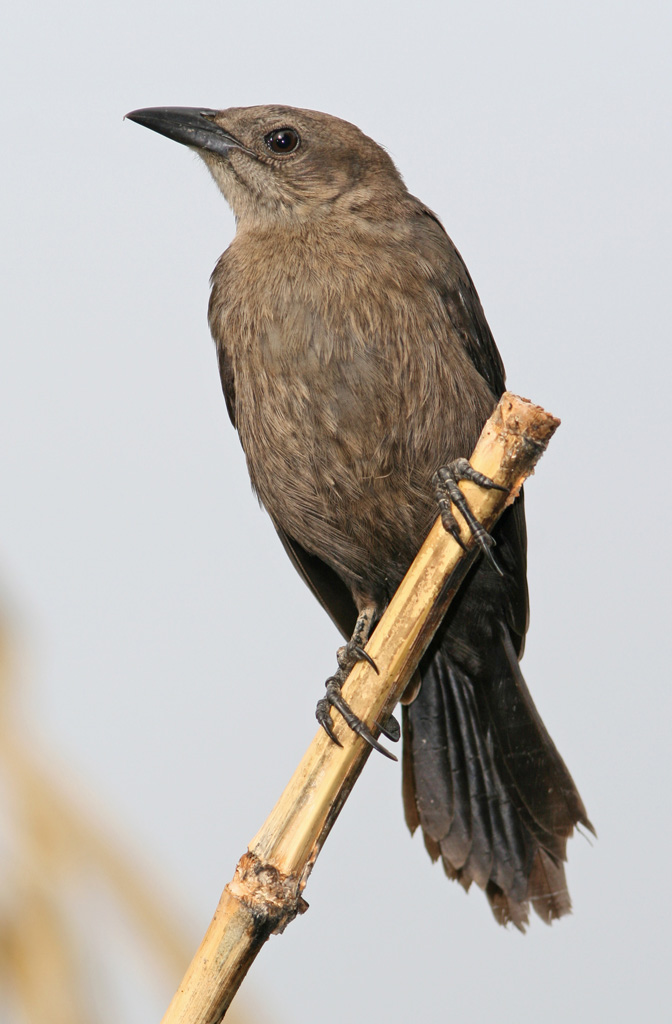- Carib Grackle
image_caption = Female Carib Grackle
status = LC | status_system = IUCN3.1
regnum =Animal ia
phylum = Chordata
classis = Aves
ordo = Passeriformes
familia =Icterid ae
genus = "Quiscalus "
species = "Q. lugubris"
binomial = "Quiscalus lugubris"
binomial_authority = (Swainson, 1838)The Carib Grackle, "Quiscalus lugubris", is a
New World tropical blackbird, a resident breeder in theLesser Antilles and northernSouth America east of the Andes, fromColombia east toVenezuela and northeasternBrazil .There are eight races, of which the most widespread is the nominate "Q. l. lugubris" of
Trinidad and the South American mainland. This form was introduced toTobago in 1905 and is now common there.The adult male Carib Grackle is 27cm long with a long wedge-shaped tail, although the latter is not so long as with other grackles. Its plumage is entirely black with a violet
iridescence , its eyes are yellow, and it has a strong dark bill. The adult female is 23cm long, with a shorter tail and brown plumage, darker on the upperparts. Young males are shorter tailed than adult males and have some brown in the plumage. Young females are very similar to the adult females.The island races differ from the nominate form in size, plumage shade, especially in the browns of the females, and vocalisations.
The breeding habitat is open areas including cultivation and human habitation. This is a colonial breeder, with several deep, lined cup nests often being built in one tree. Two to four whitish eggs are laid. Incubation takes 12 days, with a further 14 to fledging. This species is sometimes parasitised by
Shiny Cowbird , but is quite successful at rejecting the eggs of that species.The Carib Grackle is a highly gregarious species, foraging on the ground for
insect s, otherinvertebrate s or scraps. It can become very tame and bold, entering restaurants to seek food, normally feeding on leftovers. It will form groups to attack potential predators, suchdog s,mongoose s orhuman s, and at night it roosts colonially.The Carib Grackle's song is a mixture of harsh and more musical ringing notes, with a bell-like "tickita-tickita-tickita-ting" and a rapid "chi-chi-chi-chi" being typical. The calls vary in dialect between islands and the bird usually fluffs up its feathers when calling.
Gallery
References
* Database entry includes justification for why this species is of least concern
* "Birds of Venezuela" by Hilty, ISBN 0-7136-6418-5
*cite book
last = ffrench
first = Richard
title = A Guide to the Birds of Trinidad and Tobago
edition = 2nd edition
year = 1991
publisher = Comstock Publishing
isbn = 0-8014-9792-2
* "New World Blackbirds" by Jaramillo and Burke, ISBN 0-7136-4333-1
Wikimedia Foundation. 2010.

